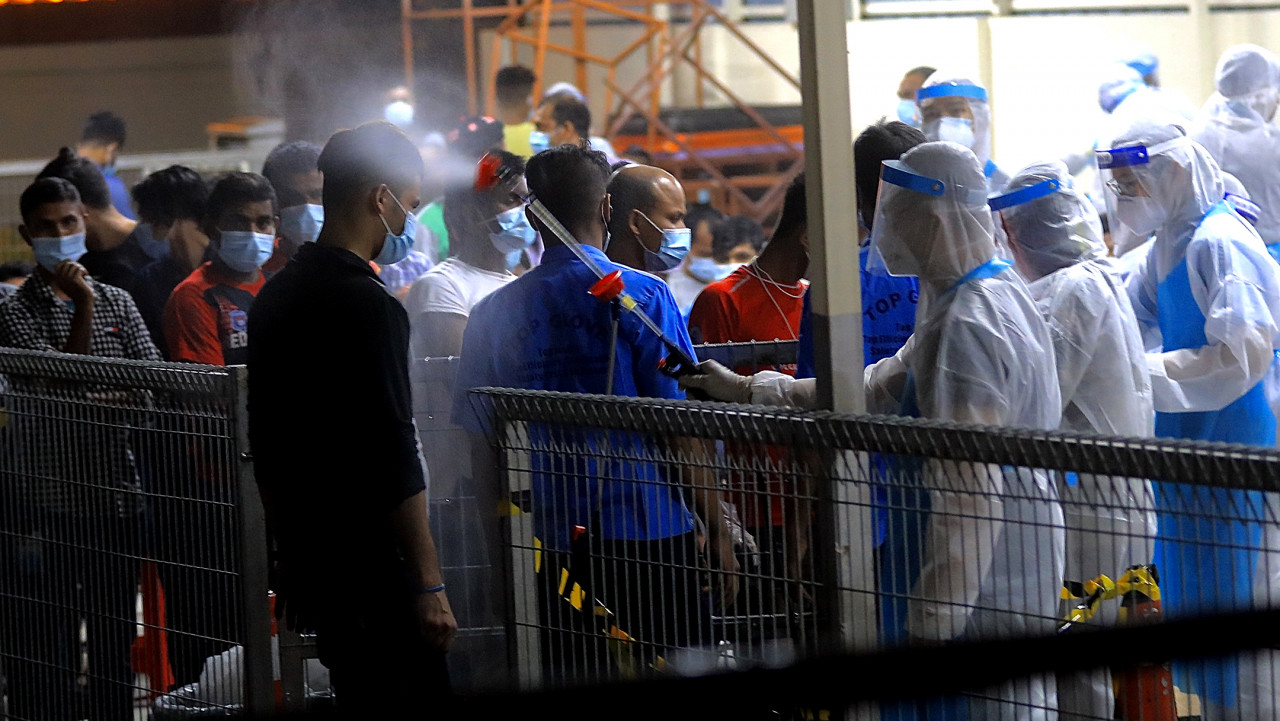THE warning to manufacturers by the International Trade and Industry Ministry (Miti) reported over the weekend raises very serious questions on the handling of the Covid-19 pandemic.
According to reports, Miti is involved in 99 of the more than 300 Covid-19 clusters in the country. This makes the manufacturing sector the main source of Covid-19 infections. Also, Miti indicated that there would be a shutdown/strict lockdown if Covid-19 numbers did not improve.
On the shutdown measures, Health Director-General Tan Sri Dr Noor Hisham Abdullah told The Vibes that the Health Ministry has adopted a “wait-and-see stance”.
“Will see what the government decides. We only advise the government.”
Now, that’s not a very comforting statement from the health DG, and appears to indicate that the department can recommend one thing, and the government can do another, giving rise to legitimate questions as to whether this backdoor government is handling things properly.
Transparency, please
First, if indeed manufacturing is the main source of infections – it is no secret that cramped living quarters are the main source of Covid-19 – why is there no public information on this? Why is the matter only between manufacturers and the government?
Without transparent information on where the clusters are and what causes them, it will be impossible to bring the Covid-19 pandemic under control. It raises questions as to whether the government did enough to control the Covid-19 outbreak starting in Top Glove Corporation’s factories in Klang on November 23 last year.
On November 23, Malaysia recorded its highest-ever number of Covid-19 patients in a day then, with 2,188 cases. Of these, 1,511 cases, or nearly seven out of 10, came from the Teratai cluster, increasing by half from 1,067 the previous day. According to the Health Ministry, these cases originated from Top Glove’s dormitories in the area.

People before profits?
This may well have been the source of the start of a new round of infections in Selangor, and spreading to the rest of the peninsula. It was the most serious outbreak of Covid-19 since the Sabah election on September 26.
It should have been the start of a crackdown on manufacturers. But did the government do enough to control Covid-19 among manufacturers? If not, then why not? Was it because they were putting profits before people? If they did not, why did Covid-19 explode during this period?
There can be little doubt that the Sabah election was the cause of the second wave. The third wave may have started with Top Glove – the reason was overcrowded dormitories. Why was nothing done, why no containment, as exemplified by 30% of clusters in manufacturing?
Looking at the chart above, it is obvious that the first spike happened soon after the Sabah election – social distancing and travel restrictions were not put in place during the polls, allowing unrestricted travel within Sabah, and between that state and the peninsula. The Top Glove cluster started to kick in from November 23. There were some advances and declines, but starting mid-December, there has been a steady advance again.
Dr Noor Hisham has an obligation to explain to the public the true state of affairs with respect to Covid-19 at all times. Even if the government takes the final decision, he has to put up his case before the public. It is not the time to let the government go on a frolic of its own.
Covid-19 and the emergency
Now, we have to ask this question – how was Covid-19 allowed to get out of control so as to declare an emergency on January 12, when there were over 2,000 cases a day? Does Dr Noor Hisham think there was a need for an emergency? He met the king that day, too, along with the prime minister and other top government officials.
If so, why, when there is already all the legislation in place to take any measure related to health without having to suspend Parliament and the constitution? All that has been done so far could have been done without an emergency.
There are other questions, too. With the rising cases and contact tracing, it should have been obvious that the hospital system would reach full capacity and be strained. Why was there not enough serious effort put in to ease the strain on hospitals? When did we know that hospitals were going to be strained? Why wait so long before we announce it and formulate measures to take care of that?
Why did contact tracing break down? What do we do now? What is the alternative?
I had the impression that we were going to step up mass testing, but that does not seem to have happened. Why not? Does that mean the number of people who have been infected is much larger than what is reported? By how much does it make things worse?
And then, there is the matter of the vaccine. Why was Khairy Jamaluddin, minister of science, technology and innovation, appointed to lead our search and procurement of suitable vaccines? It should have been led by health authorities.
Let’s get this right, because the success of Covid-19 containment finally depends on it. Why the seeming delay in getting our vaccine rolled out? Why is our vaccine not yet ready? Singapore has got theirs, even Ecuador and Indonesia have theirs.
But where is ours? Why is it later than others? Are we prepared to roll out the vaccines in time, or will it take till next year, when enough of us are inoculated? And, have all the concerns about vaccination been sufficiently addressed?
We need these questions answered to go forward in the war against Covid-19. – The Vibes, January 26, 2021
P. Gunasegaram says the scale and magnitude of a problem must be identified and communicated first for it to be handled. He is editorial consultant of The Vibes and executive director of advocacy organisation Sekhar Institute
